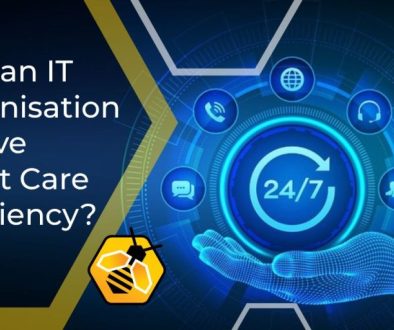How Can Your Business Benefit From A Telecoms Strategy?
If it’s been a while since you reviewed your business’s IT and telecoms strategy, now is an excellent time to take action. The costs of telecoms services continue to rise, and the scope and scale of the technology is evolving at a fast pace. This means that you could be paying more for a service that isn’t optimised to your business telecoms needs.
Furthermore, cybersecurity threats continue to grow and PSTN and ISDN services will be disabled by the end of next year. A streamlined and professionally managed IT and telecoms strategy can ensure that your business is prepared for the future and well protected against threats. This will ultimately reduce costs and boost efficiency.
The PSTN and ISDN switch-off
The Public Switch Telephone Network (PSTN) will close in December 2025, which means that all phone lines in the UK need to move to a digital network that uses Internet Protocol (IP) across a fibre-based network. This does not just apply to voice lines, but all equipment that uses PSTN, such as access control systems, CCTV, and fax machines.
PSTN is regarded as an old and outdated technology that is not fit for the 21st century. It requires difficult and time consuming maintenance, and as digital technology can perform all of the functions of PSTN and more, it is fast becoming obsolete. The Integrated Services Digital Network (ISDN) will be decommissioned.
This means that if your business still has devices that rely on ISDN, it’s time to start putting new systems in place. It’s best to start this migration process as soon as possible to smooth over any hiccups and avoid being pressured into a rushed decision that may not represent the best value for money or type of service that you need.
Business continuity
Even if you already have a fully digital network, it can still be prone to unforeseen disruptions. For example, it will be fully dependent on a power supply and if your premises should lose power, your telecommunications will be dependent on the mobile network. This may not be adequate for medium and larger sized businesses.
Therefore your IT and telecoms strategy should make provisions for such circumstances and have a back up plan in place. This will ensure that your business can minimise downtime and potential loss of data, guarding against a fall in productivity and disrupted customer services.
Cost effectiveness
Telecoms contracts can be complex and confusing, because there are multiple products and services available, and the cost of many of these has risen steeply in recent years. It can be very difficult to understand which ones might be most beneficial to your business and to gauge your usage levels.
This may be a fluid situation, as working patterns change and employees are no longer tethered to a single location. A telecoms strategy will enable you to accurately record your exact day to day usage and help you to identify the best contract for your needs.
Most businesses do not have the time or resources to do this themselves, so using an outsourced IT and telecoms support service is a popular solution.
This will ensure that you are not paying for products and services that you don’t need and significantly reduce your bills. It can also make management of your telecoms systems faster and easier by consolidating all of the services with one provider.
More robust security
Greater reliance on digital technologies steps up the threat of cybercrime and data security breaches. These can be disastrous for a business, from the loss of productivity and resulting costs, to the serious damage to the reputation and credibility of the business.
A managed telecoms service will keep your business protected from the latest security threats and will proactively take steps to manage and mitigate against the risks.
Scalability and adaptability
It is likely that your business needs are not static, but will change as you scale up, downsize, or adapt to fluctuating demand. A bespoke strategy will allow you to seamlessly respond to changing needs, for example with increased data at peak times, or other enhanced services.
This will minimise disruptions and ensure that interactions with customers, suppliers, or collaborators are not frustrated by slow connections or insufficient data.




